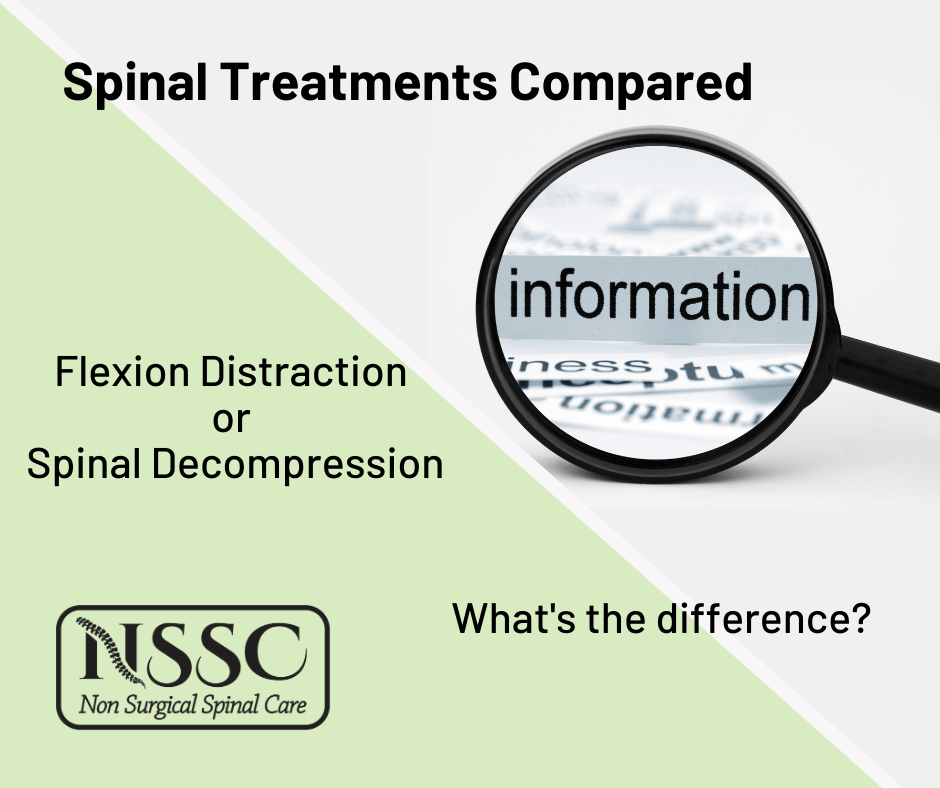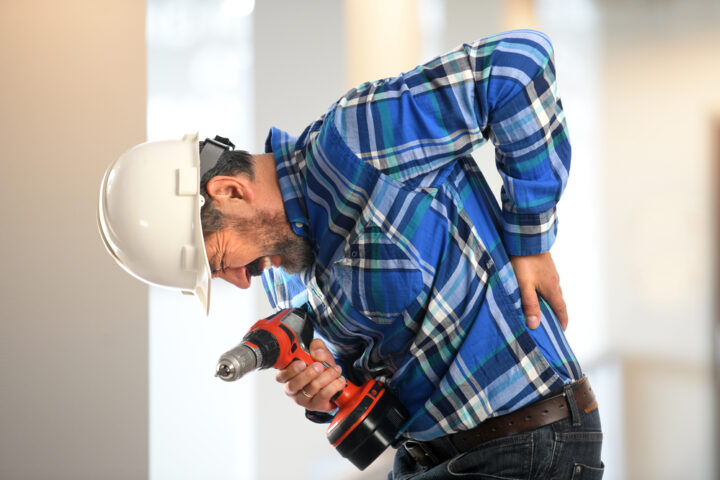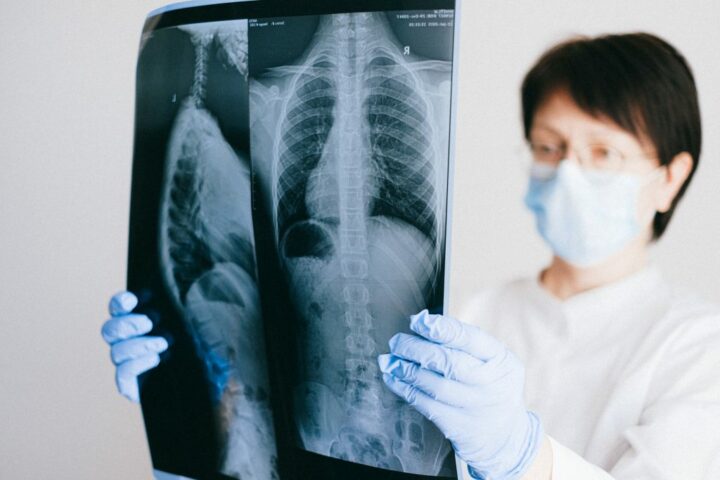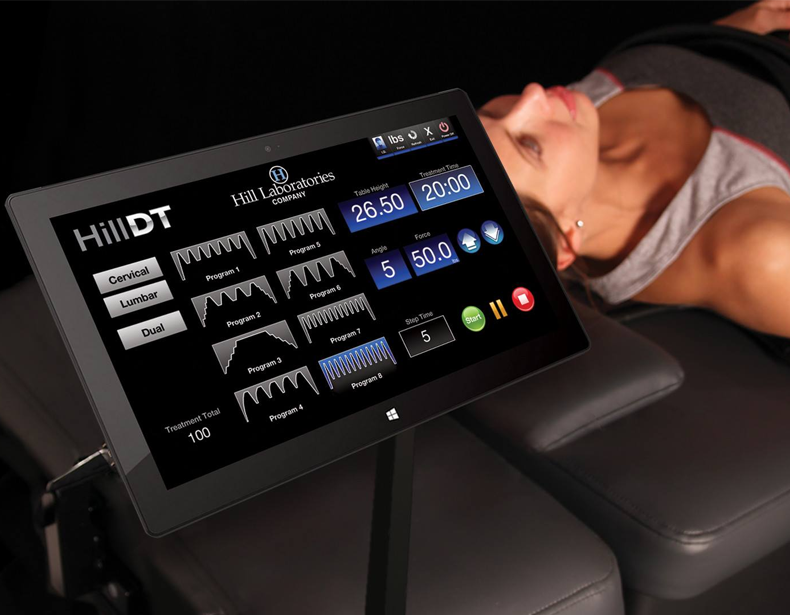Flexion Distraction v Spinal Decompression – what’s the difference?
There are subtle differences between Flexion Distraction and Spinal Decompression treatments. It depends on the type of symptoms presenting as to which one may be the best for a particular condition.
Flexion Distraction is particularly good for facet issues and posterior conditions which require multi-directional movement to relieve symptoms. Spinal Decompression can precisely isolate a particular disc and move the vertebrae in an axial direction. This directional pull reduces the entire area of pressure on the disc.
In some patients, both treatments are beneficial and perhaps different parts of the spine may benefit from either or both.
The differences are:
Flexion Distraction
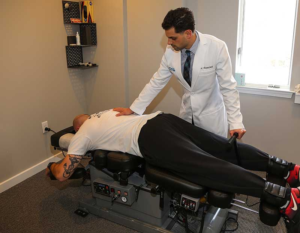
- The patient is in the prone position (face down).
- Treatment needs to be guided by a practitioner which can make it difficult to repeat a treatment exactly.
- Gravity assists to realign the spine.
- The treatment is designed primarily to move the body forward and back and from side to side to get movement into the spine.
- The practitioner performs manual manipulations while the table is flexing and distracting the spine (moving back and forth).
- The treatment tables have been around for many years.
- The effectiveness is directly proportional to the proficiency of the provider.
- Mainly treats the posterior conditions such as facets due to the positioning of the patient being primarily flexion in motion.
- The patient is alert during the treatment.
Spinal Decompression
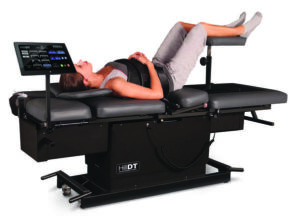
- The patient is in the supine position (on their back, face up).
- Treatment is totally computerised and can be set up by a technician – treatments can therefore be repeated exactly without human intervention.
- Computer monitors the force and body resistance to deliver the exact force required.
- The treatment is designed to separate the vertebrae on either side of a particular damaged disc to relieve the pressure and allow the disc to rehydrate, return to its original position and release any pinched nerves. It does not encourage sideways movements but rather takes the entire pressure off the disc.
- The spine is gently and gradually elongated to take pressure off a targeted disc. This is in an axial (straight up and down) direction, not side to side or back and forth.
- The treatment tables are the latest generation.
- The application of force is precisely calibrated. The table provides computer-controlled movement consistently and safely to the patient with each treatment.
- Can treat posterior facet conditions but also anterior conditions such as disc bulges, herniations and degenerative disc disease, due to the positioning of the patient and the axial movement of the table.
- Most often patients sleep during the treatment.
The similarities are:
- Both are Non Surgical
- Both are intended to relieve pain
- Both encourage more movement into the spine
You should check with your practitioner to establish which treatment is more suitable to your particular condition which will be established not only by imagery but also by physical examination.
For more information on Flexion Distraction https://www.cox.com
For more information on Non Surgical Spinal Decompression go to https://nonsurgicalspinalcare.com.au/what-is-sd/

